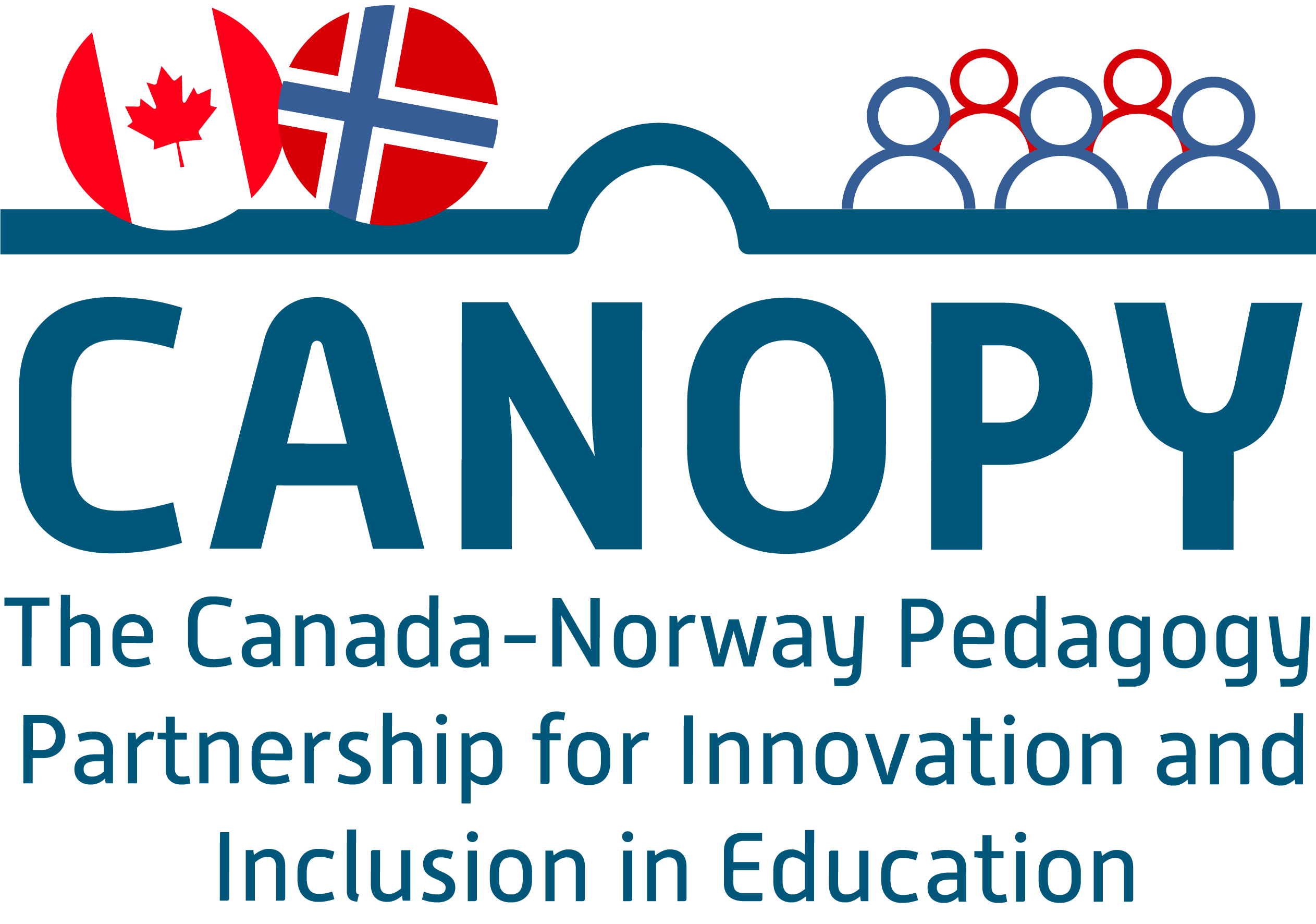"From the Theoretical to the Experiential": The Second Partnership Meeting in 2023
After meeting each other for the first time in Kingston in March, the whole team were excited to meet again – this time in Levanger, Norway. The second partnership seminar of 2023 was opened with a land acknowledgment by David Kroik. It was wonderful and powerful, and the perfect way to start the week, providing everyone with a better understanding of where we were situated and the Sámi history and current issues facing the Sámi in the area. It was a reminder of the importance of recognizing and honoring the Indigenous peoples on whose land they gathered.
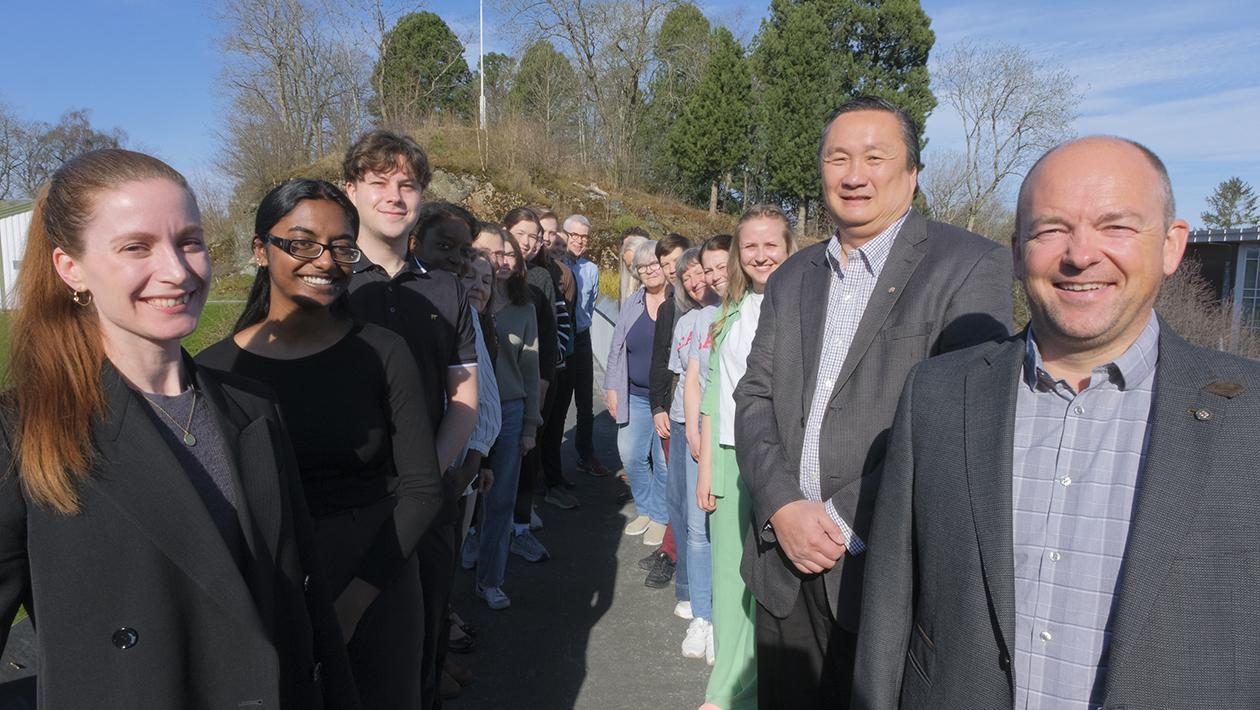
Café Dialogue
The largest portion of the first day was dedicated to the research activity Café Dialogue, where the participants were divided into five groups. Each group was asked a question and used about 20 minutes to discuss, before rotating to the next table and being asked a new question. It provided a platform for participants to share their perspectives, exchange ideas, and collectively explore important topics. The dialogue format encouraged collaboration and helped generate valuable insights through diverse viewpoints.
The cafe dialogue was a safe and welcoming group activity. I enjoyed listening to the opinions and perspectives of members of my group and enjoyed sharing my own point of view. -Emily Redfern (ConEd student at Queen’s University)
The first day highlighted the importance of dialogue and how much substance it can bring out. Every time they had structured dialogues, it always left people wanting to continue their discussions, which led to many more informal discussions throughout the week.
This was great – there were even multiple times where we were talking about things that I thought I had nothing to say about. Then, next thing you know, the dialogue would spark a memory/opinion/thought in my brain, and I was able to make contributions to the discussion – Sam Jacquard (ConEd student at Queen’s University)
Presentations
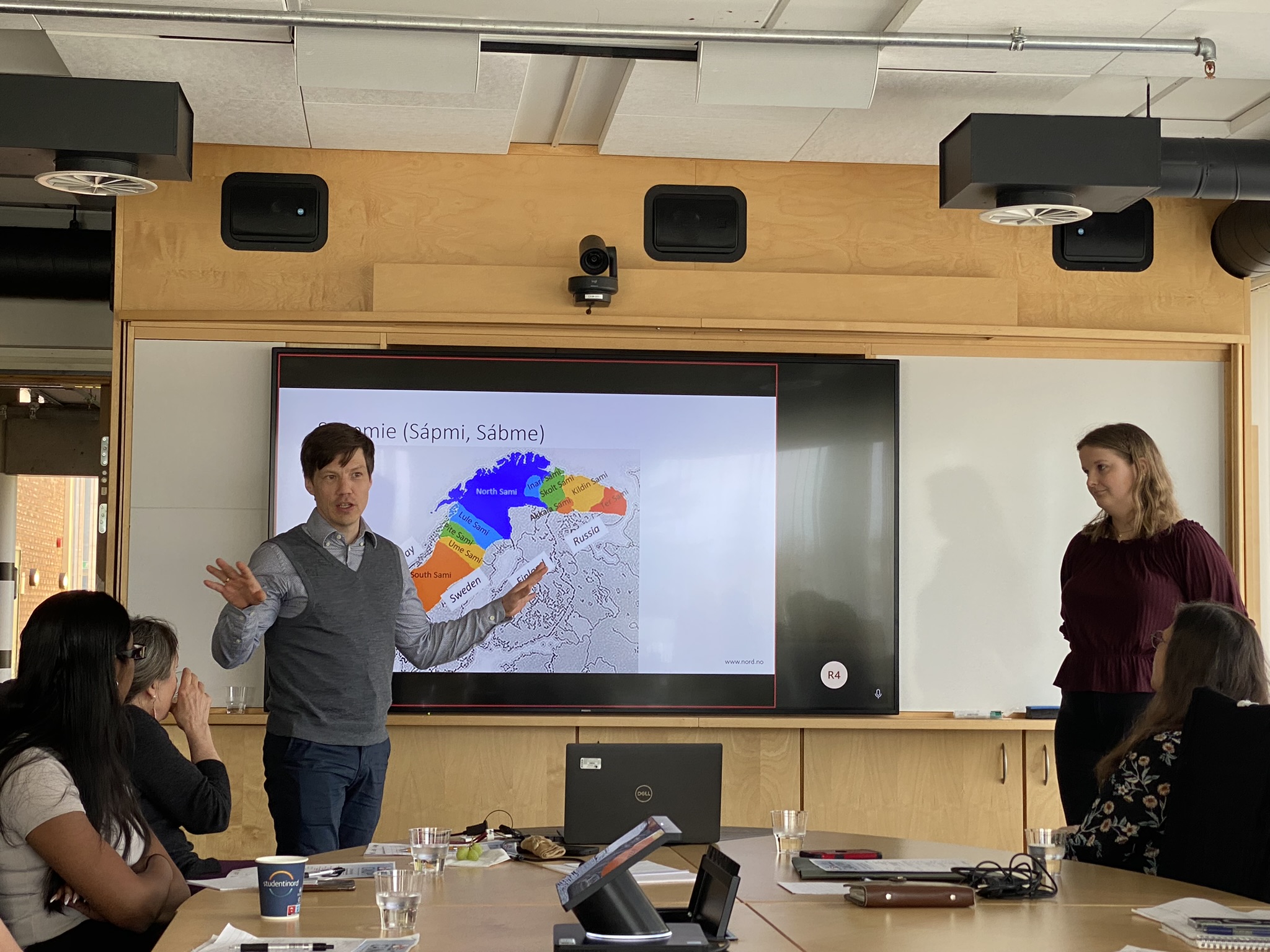 Throughout the week, the program contained interesting presentations and workshops. Both led to engaging discussions and questions between members. It also reinforced the ideas and initiatives to continue the collaboration beyond 2023, which were initially initiated during the first partnership seminar in Kingston.
Throughout the week, the program contained interesting presentations and workshops. Both led to engaging discussions and questions between members. It also reinforced the ideas and initiatives to continue the collaboration beyond 2023, which were initially initiated during the first partnership seminar in Kingston.
Siri Nystø Ráhka presented Rádnastallam – a language arena for children in Drag. The project showed the perspective of, and power in, “being friends” as a way to encourage children to speak their language through play-based learning. One of the members commented that the work done in Drag is a reminder of the importance of preserving and celebrating indigenous cultures, as well as the importance of being surrounded by the language.
Alana Butler’s presentation on Critical Global Citizenship Education, which was presented along with Karen Pasby and Thashika Pillay (joined through Zoom), was described as though-provoking and inspiring. Their focus on anti-oppressive knowledge sharing in secondary schools showcased the importance of challenging power structures, promoting social justice, and fostering critical thinking among students. The initiative they shared serves as a valuable model for creating inclusive and empowering learning environments.
A third example of the presentations was the Teacher Education Program at Nord University, presented by David Kroik. The program’s focus on inclusive education and the integration of indigenous perspective is impressive, and the presentations was both insightful and engaging. Ena Holtermann commented that “David’s expertise and passion for promoting inclusive teaching practices were evident, inspiring us to embrace diversity and create culturally responsive learning environments”.
As mentioned, the content of the program led to questions and discussions. The warm and inviting atmosphere of the partnership group was unparalleled, which led to everyone feeling comfortable speaking up.
Everyone has different perspectives to bring to the table and is also willing to listen and learn from others, creating fruitful discussions about topics which are frequently quite tough – Hanna D. Ajer (Associate Professor of Lule Sámi at Nord University)
Everyone brough their unique experiences and perspectives, and when this was combined, it made for very valuable discussions. Some of the student though they didn’t have much to add, but simply being part of the discussions and being able to absorb the information was described as very valuable.
I think it’s important to have the students in the project to have this open-minded, ready-to-learn mindset in situations where they may not have much to add just yet. It just means they will learn more and have more to add in the future – Sam Jacquard (ConEd student at Queen’s University).
When each day was over, the conversations didn’t stop. It continued while the group packed their backpacks and when they walked back to the hotel. The interest in the theme was evident in the group, as they seemed to spend every free moment discussing various topics connected the theme.
I would have loved even more time to talk and discuss – there was so much to talk about! – John-Magne Nydahl (MAGLU student at Nord University)
From the Theoretical to the Experiential
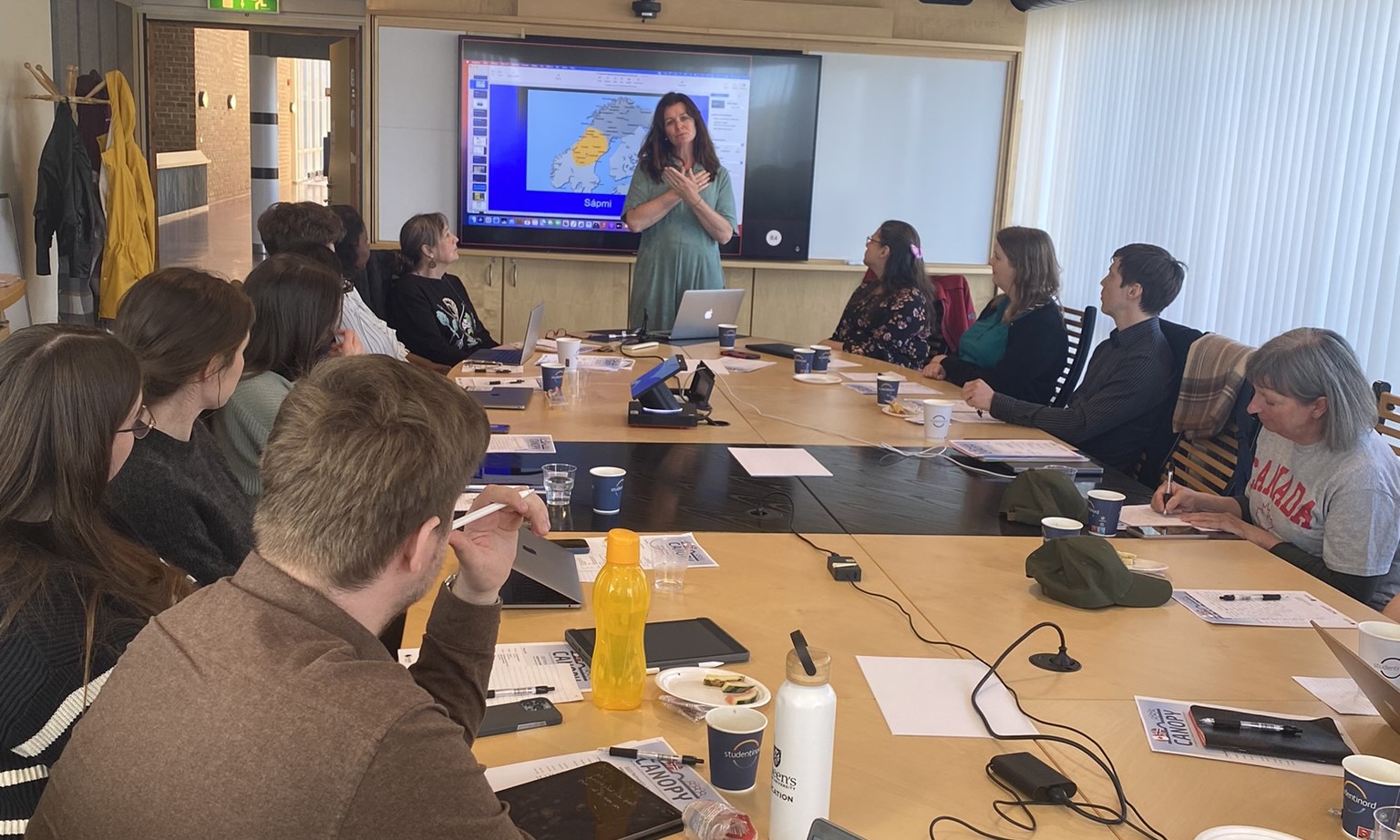 The week didn’t just contain presentations and discussion. It was also packed with workshops, visits and culture. One of the workshops was a combination of theory and practice. Grete Daling’s captivating presentation about joik was delightful experience. She explained the structure of joik, then demonstrating it and letting the participants try themselves. The traditional Sámi singing showcased the power of music as a means of cultural expression and identity.
The week didn’t just contain presentations and discussion. It was also packed with workshops, visits and culture. One of the workshops was a combination of theory and practice. Grete Daling’s captivating presentation about joik was delightful experience. She explained the structure of joik, then demonstrating it and letting the participants try themselves. The traditional Sámi singing showcased the power of music as a means of cultural expression and identity.
The concert by Sámi artists Marja Mortensson, Frode Fjellheim, and Daniel Herskedal embodied the spirit of Joik in a very real way. It was a beautiful and interesting concert, with varied styles of joik both more traditional and more modern and experimental. Marjas joiking really gives goosebumps, whereas Frode has an amazing ability joke with the audience and pull us into his fascinating musical world at the same time.
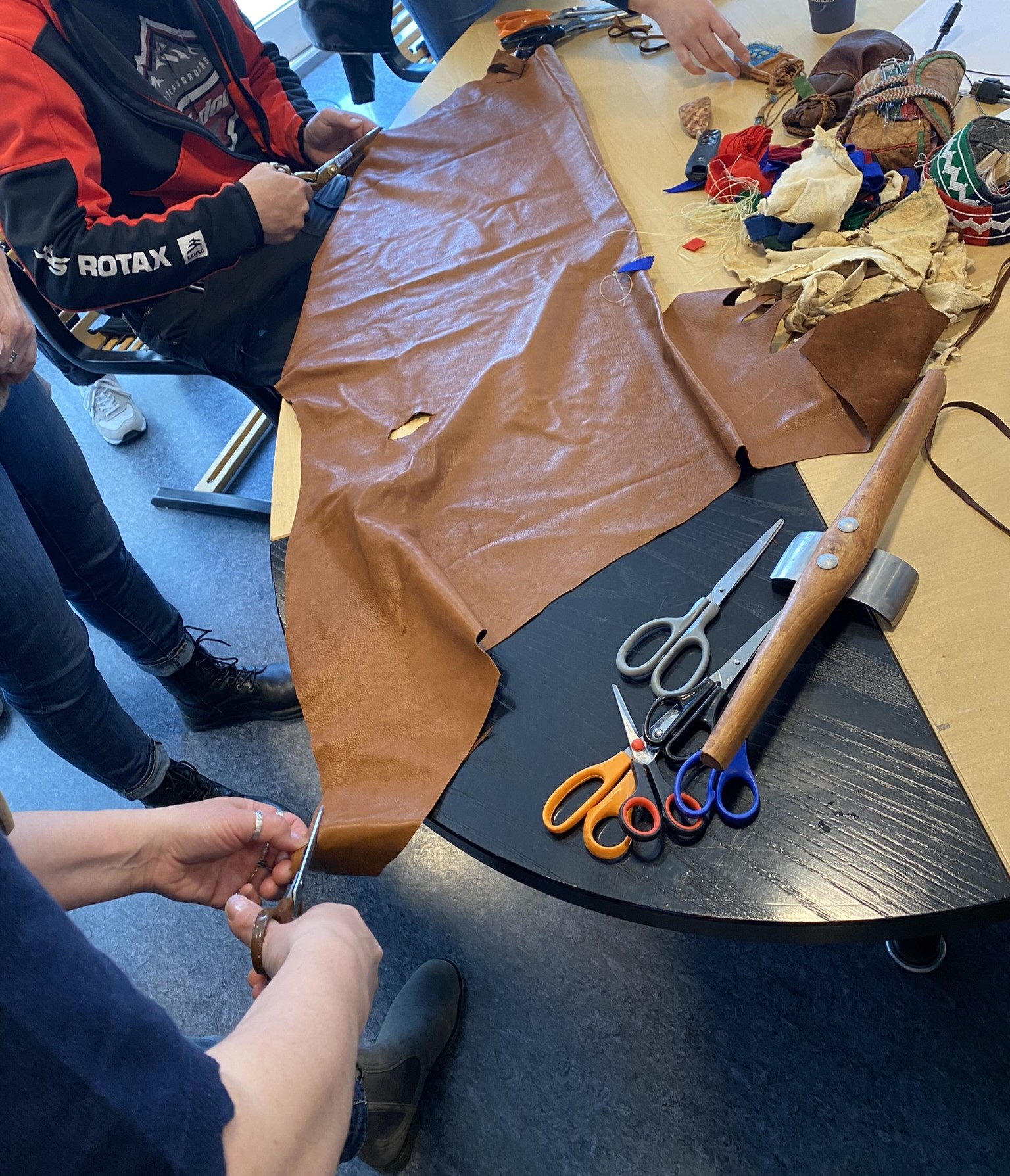 The museum visit to Saemien Sijte in Snåsa was a nice way to end the day in Snåsa, after two school visits. The guide was very knowledgeable, and the Canadians were all looking forward to get a better explanation of the entire history of Sámi people, and this tour did exactly that. It was fascinating (although not surprising) to see so many parallels in the way Sámi people were treated and the way Indigenous people have been treated in Canada.
The museum visit to Saemien Sijte in Snåsa was a nice way to end the day in Snåsa, after two school visits. The guide was very knowledgeable, and the Canadians were all looking forward to get a better explanation of the entire history of Sámi people, and this tour did exactly that. It was fascinating (although not surprising) to see so many parallels in the way Sámi people were treated and the way Indigenous people have been treated in Canada.
Meerke Krihke Leine Bientie invited the group to the Gamme (traditional Sámi turf hut), where she explained the rules and ways of behaving inside the traditional Sámi home. They were served bonfire coffee, dried reindeer meat and gáhkku (traditional thin bread), while listening to Meerke and her husband speak. Some in the group mentioned that they found it interesting to learn how women are revered, an interesting shift from the patriarchal structures they have known.
My favourite part of the day was the cultural experience realized in the Gamme structure. Here, the cultural immersion through food, drink, and atmosphere under the incredible and beautiful ceiling, as we sat around the fire, was a treat – a feast for the senses in all aspects.
Following their time in the Gamme, Meerke led a Sámi hand craft session – a session on duodje (Sámi handcraft). This session provided everyone to learn something new while also creating space for some silent reflection in an otherwise quite busy program. It also created a space for the “informal discussions”. It was the perfect time of the day for these kinds of discussions. Everyone worked at their own pace and had some continuations of previous more serious talk.
School Visits
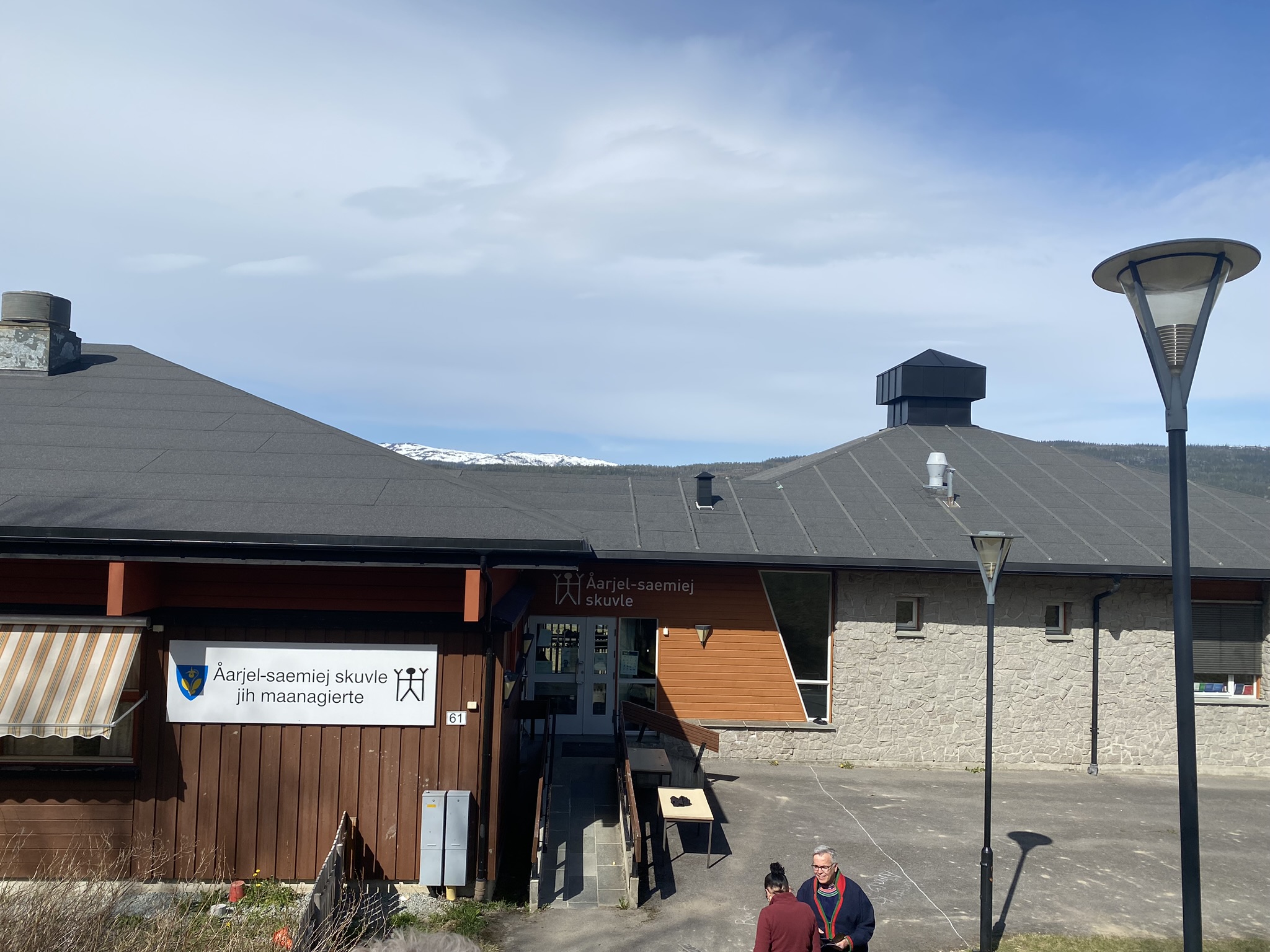 The Canadian group visited three schools during the week – one in Levanger and two in Snåsa. While in Snåsa, they visited a Sámi boarding school and the neighboring Snåsa school which is a 1-10 grade school.
The Canadian group visited three schools during the week – one in Levanger and two in Snåsa. While in Snåsa, they visited a Sámi boarding school and the neighboring Snåsa school which is a 1-10 grade school.
The Sámi boarding school Åarjel-samiej skuvle was described as an interesting concept because it shows how a school can promote and foster cultural development. The school is unique in its offering of specialized learning with an option to board which is extended for those who are Saami who strive to connect with their Saami Indigenous culture. A neat alternative for sure, by choice.
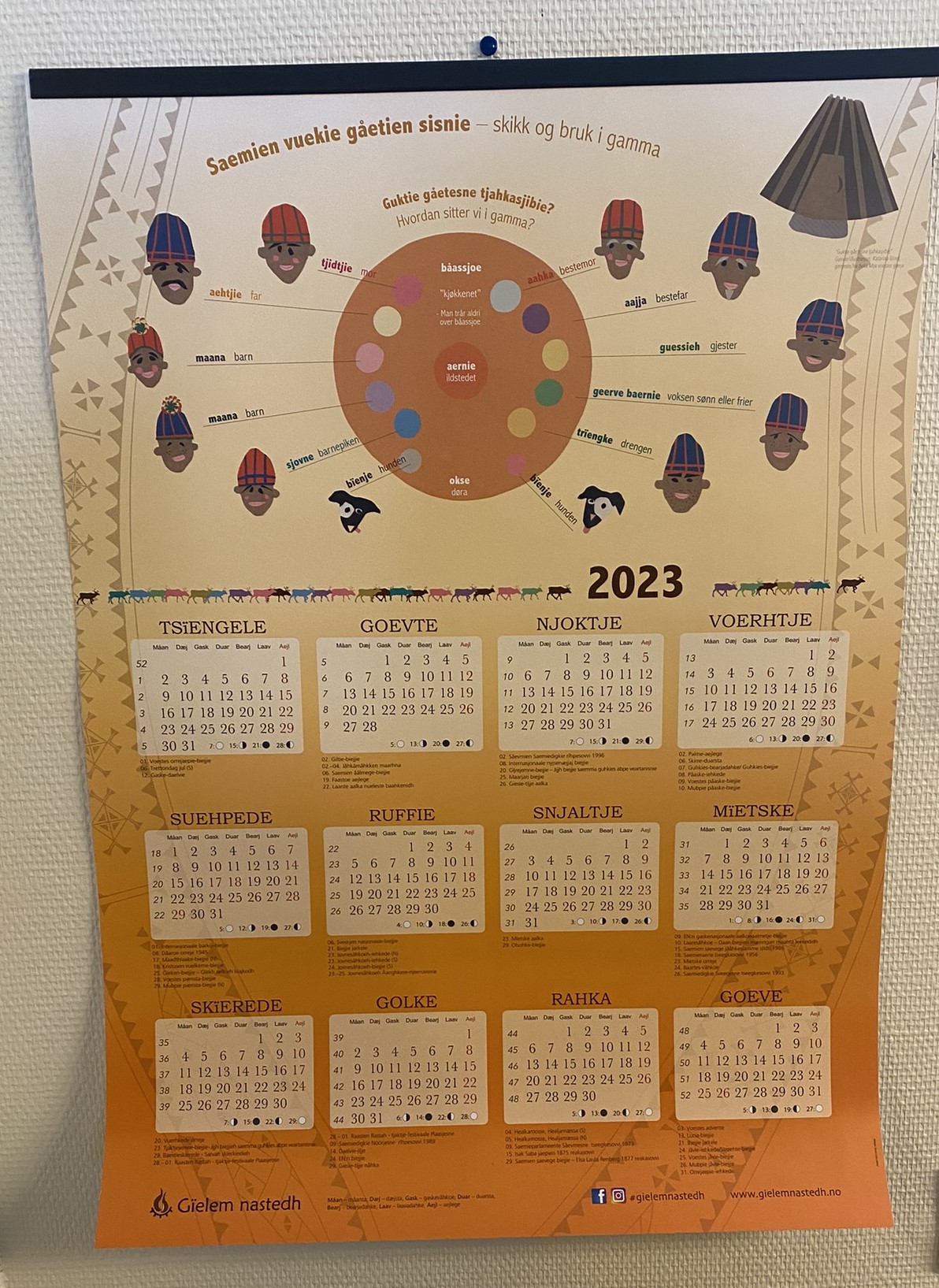
It was great to be able to get a glimpse at the Norwegian school curriculum at Snåsa school and the efforts that are made to incorporate the Sámi curriculum. It also allowed the Canadians to compare their classrooms and look at some of the similarities between the two.
The last school visit of the week was to Nesheim School in Levanger – a 1-7 grade school. The group was impressed by the emphasis on outdoor education and play. Children are encouraged to spend time in outdoor settings, to be part of nature, and to foster a healthy rapport with nature. They were also encouraged to be children, to savor childhood as a time of exploration which naturally fuels learning through creative, choice, and organic activities.
The principal emphasized the importance of community, everyone being equal, kids having fun, and so many more things which I loved to hear and made me envious that we are lacking some of it in Canada – Sam Jacquard (ConEd student at Queen’s University)
